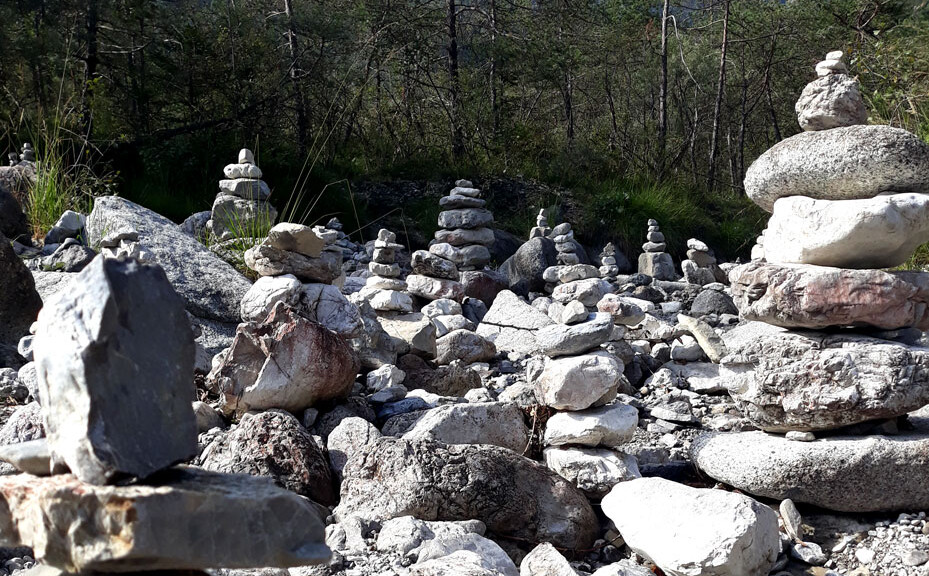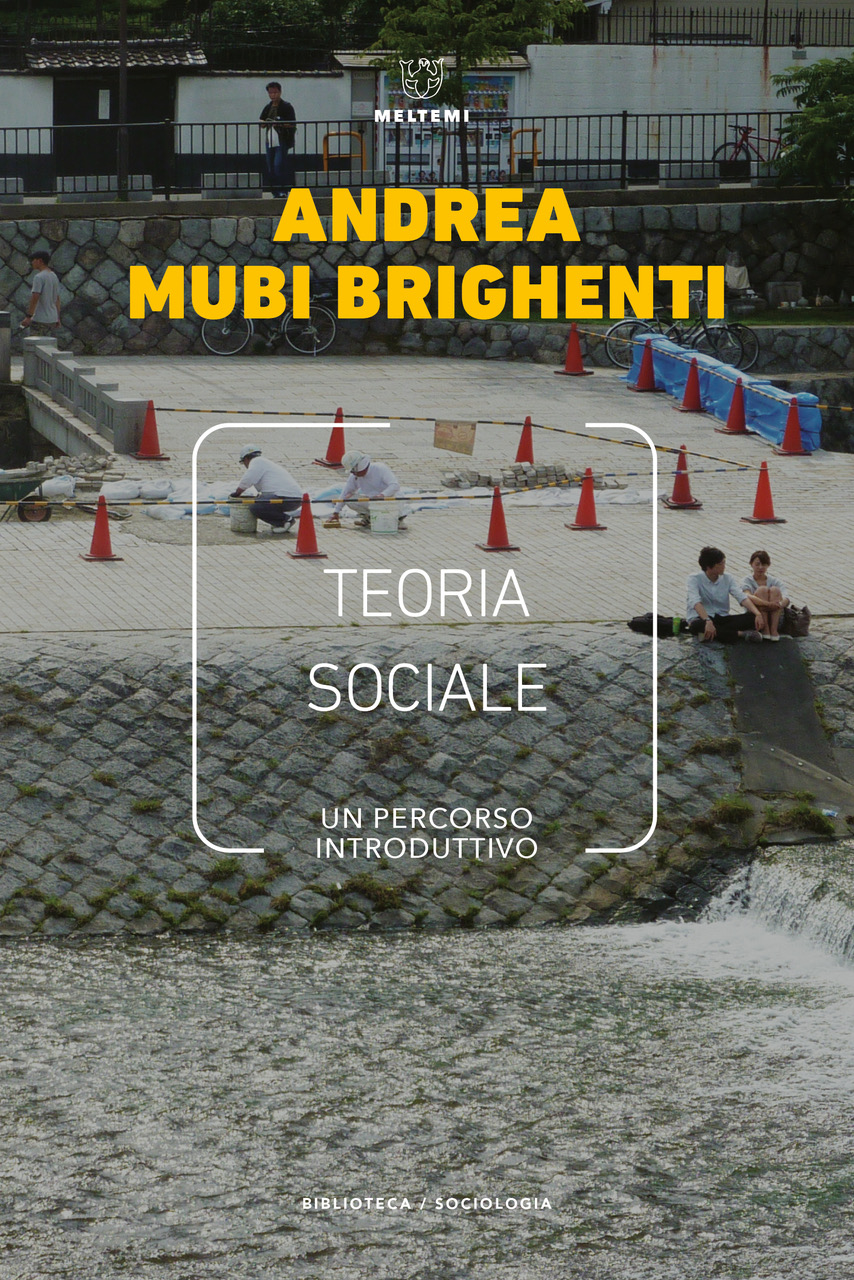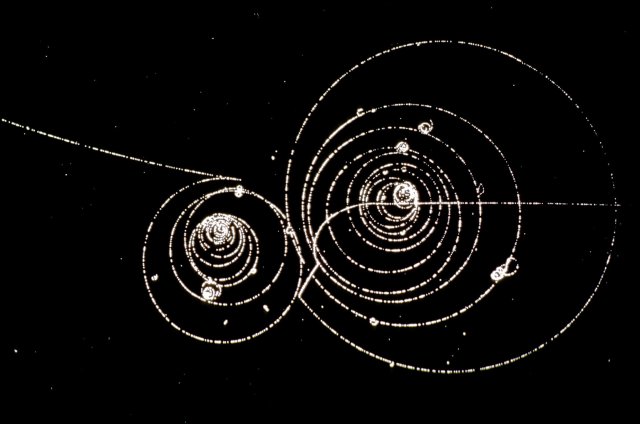‘We do have a limitless reservoir of ignorance, but we also have conceptual confusions that new knowledge seldom helps relieve.’
Ian Hacking
‘We do have a limitless reservoir of ignorance, but we also have conceptual confusions that new knowledge seldom helps relieve.’
Ian Hacking
Conceptualizing social life through topological folding, braid operators and collapse functions
Abstract. Social intensiology is outlined here in its connection to morphogenesis. the latter aims to explain how form come into existence, just as the former seeks to tackle the intensive states of social life. A topological reference model is proposed for conceptualizing how social life operates immanently with saliences and pregnances. The paper starts from the famous Collatz conjecture, and reviews how it has been recently modelled by Danail Valov using braid groups and including thermodynamic irreversibility into the picture. A ‘Valov braid’ can be understood as a manifold, an entity that is, at the same time, individual and collective. Its collective structure can be reconstructed, through its operational logic, as a tensional field. An attempt is made to show how phenomena of memory and measure are intertwined with the braid’s developments, giving rise to a rich present, multi-faceted that lives in non-coincidence. Within such framework, rhythmanalysis is presented as a useful tool for assaying and experimentally improving social life.
Keywords: social theory; social modelling; topology; braid groups; rhythmanalysis
>>> draft available upon request
 Out now in Cosmos and History: The Journal of Natural and Social Philosophy
Out now in Cosmos and History: The Journal of Natural and Social Philosophy
Abstract. The notion of elemental reality is parsed here as instrumental to a renewal of the understanding of social formations, orders, processes, events, and, more generally, social life. An attempt is made to revisit the element notion drawing insights from the classical imagination, so as to develop an ‘elementalism’ that does not imply a simple return to atomism, but rather retrieves some important insights from the Aristotelian tradition. Elementalism, it is suggested, enables us to see the limitations of both individualist and collectivist takes on social life, allowing for a more ‘environmentalist’ idea of what constitutes society. In an attempt to analyze how an elemental reality can be said to be at play, the category of ‘the visible’ is considered, so as to evince some of its constitutive dimensions, properties, and moments.
Keywords: social theory; medium theory; social environment; elemental reality; the visible
Link to OA article : https://cosmosandhistory.org/index.php/journal/article/view/1168
Also here

(with Carlo Brentari and Federico Comollo)
Abstract. We propose the notion of bioability as the subjective correlate to biodiversity. Bioability entails the capacity to maximize the forms and patterns of life within given ecosystems. Cutting across the natural and social sciences, the bioability approach opens up a field for research and intervention, which focuses on the imaginational and aspirational dimensions of terrestrial politics. In the context of increased awareness of climate tipping points, developing bioabilities help advancing experimental practices in ecological conversion.
>>> Draft available upon request.
‘…and those people who believe in the hairstyle, they call ‘em punk, and if you want to know the truth then I am really a punk. I’m a punk. I’m out of control and I can’t be controlled, if I want to spit here I spit here, if I want to piss there I piss there, anything I want to do I do it. Punk is magic.’
Lee Scratch Perry

New paper on Alex Langer, ecology, politics, measure.
Now published at | https://link.springer.com/chapter/10.1007/978-3-031-36667-3_5
For what rankings are worth, I’ve been included in Stanford-Elsevier database of top-2% cited scientists (by single recent year rank) as calculated by John P.A. Ioannidis (data available at https://elsevier.digitalcommonsdata.com/datasets/btchxktzyw/5 ).
.
A short commentary on evaluating science, now published in Social Science Information: https://doi.org/10.1177/05390184211021205

OUT NOW!

Paper at TCS Philosophy & Literature Conference 2019, Alpen-Adria-Universität Klagenfurt, Austria, May 29th – June 2nd, 2019
Now published in City, Culture and Society
Abstract
An analysis of the city through its crystallising processes is here proposed. Because crystallisation involves phase transition, a review of the latter, as well of the notion of phase in its relation to order, is first submitted. Then the question is posed: Can we suggest that cities have phases? What would it imply to study cities as “phased beings”, or phased phenomena? Which characteristics of crystalline phases can prove most relevant for cities? The paper explores crystallisation as a lens for understanding spatial order, temporality, individuality and perception in the course, and in the context, of the urban process and urban life.
Keywords
Urban phases; Urban crystallisation; Crystal growth; Crystalline life; Crystallised cities; Urban perception; Urban individuality
Now out at: https://journals.sagepub.com/toc/ssic/58/2
Featuring :
Measurements and their limits – Editorial
David Jaclin, Peter Wagner
Umwelt-measures. On extensive and intensive measures: Introduction to the special issue ‘Theorising measures, rankings and metrics’
Andrea Mubi Brighenti
Ethical dimensions of quantification
Wendy Espeland, Vincent Yung
Commensuration, compromises and critical capacities: Wage determination in collective firms
Nina Pohler
Evaluations as value-measurement links: Exploring metrics and meanings in science
Felicitas Hesselmann, Cornelia Schendzielorz
The role of measurement in theorising about the world
Nicole Holzhauser, Frank Eggert
When reactivity fails: The limited effects of hospital rankings
Christopher Dorn
Introduction to the special issue ‘Theorising measures, rankings and metrics’
Now published: https://journals.sagepub.com/doi/full/10.1177/0539018419858816
The whole Special Issue is due to appear soon…
A speech I’m giving at
International Workshop
The Role of Visibility in Academic Evaluation.
(E)Valuation Studies in Science and Higher Education
November 15‐16, 2018
Humboldt‐Universität zu Berlin
Senatssaal, Unter den Linden 6, 10099 Berlin
+ info : https://www.sowi.hu-berlin.de/de/lehrbereiche/wissenschaftsforschung/workshopevaluation
NOW OUT in TASTE • Law and the Senses book series (Eds. Andrea Pavoni, Danilo Mandic, Caterina Nirta, Andreas Philippopoulos-Mihalopoulos). London: University of Westminster Press.
Available in Open Access – https://www.uwestminsterpress.co.uk/site/books/10.16997/book21/
Now published in Theory, Culture & Society 35(1) http://journals.sagepub.com/toc/tcsa/35/1
Abstract
Issues of measure and measurement, and their relation to value and values, are of concern in several major threads in contemporary social theory and social research. In this paper, the notion of ‘measure-value environments’ is introduced as a theoretical lens through which the life of measures can be better understood. A number of points are made which represent both a continuation and a slight change in emphasis vis-à-vis the existing scholarship. First, it is argued that the relation between measure and value is necessarily circular – better, entangled. Second, a conceptualisation of measures as territorialising devices is advanced. Third, importance is given to the fact that measures are not simply tools in our hands, they are also environments in which we live. Fourth, attention is drawn to the fact that the unit (n=1) is not just a quantitative happening among others, but is qualitatively distinct.
http://journals.sagepub.com/doi/abs/10.1177/0263276416689028
On Foucault’s Kehre towards the Subject
A chapter in Andreas Oberprantacher & Andrei Siclodi (Eds.) Subjectivation in Political Theory and Contemporary Practices
http://www.palgrave.com/br/book/9781137516589
http://link.springer.com/chapter/10.1057/978-1-137-51659-6_3
Published in The Unbounded Level of the Mind. Rod Macdonald’s Legal Imagination.
Edited by Richard Janda, Rosalie Jukier and Daniel Jutras. McGill University Press, 2015.
My tribute to the great scholar and professor Rod Macdonald (1948-2014), a questioner and an inspirer by all means.
 Lecture at the Seminar ‘Architecture: enduring, ephemeral, moving, dust’
Lecture at the Seminar ‘Architecture: enduring, ephemeral, moving, dust’
Department of Architecture and Built Environment, Lunds Tekniska Högskola, Lund University, December 2, 2014
In this lecture, I would like to imagine some ways in which we may study temporality in the city and the built environment. In the first part, I present a theorization of time that draws from the lineage Bergson-Deleuze. I explore in some details the notion of ‘the instant’ as it appears in Deleuze’s The Logic of Sense (1969), and how this notion relates to two distinct images of time, namely aiòn and chronos. Subsequently, I would like to puzzle about how these philosophical images could be productively employed to examine urban spacestimes, rhythms and territories on the making. To this aim, I resort to the ‘tensed entwinement’ of logistics and the event. Logistics, which is originally a military art, concerns the calculated dispatching and delivering of goods to the right place at the right time. As such, it is part of a broader attempt at governing flows in the city. Thus, the interpretive framework in which I would suggest to place logistics is Foucault’s notion of ‘liberal governmentality’, as elaborated in particular in The birth of biopolitics (1979). On the other hand, Foucault’s analysis of freedom as a governmental notion also introduced the notion of ‘possible event’ as a phenomenon and object to be incorporated into a distinctive calculation. My argument is that an unresolved tension remains between logistic calculation and the event. Different images of time may help us to capture what is at stake here. The third and conclusive part of the lecture will consist in setting up a series of open questions which could potentially outline a research agenda for urban and architectural research aiming at bringing temporality into the focus of spatial analysis.
Materials, Episteme and Politics of Cluttered Social Formations
About
This book proposes a historical-conceptual journey into the cluttered social formations that have remained outside of mainstream sociology. In particular, it reviews urban crowds, mediated publics, global masses, population, the sovereign people and the multitude and addresses the question: ‘What is the building block of the social?’.
Contents
1. Multiplicities Old and New
2. Urban Crowds, Mediated Publics and Global Masses
3. Population, ‘the People’ and the Multitude
4. What is the Building Block of the Social? Episteme of the One and the Many
5. Across and Within: Issues of Virality, Imitation and Reactivity
Conclusions: Visible Multiplicities and Layered Individuals
.
+ info | https://www.palgrave.com/it/book/9781137384980
.
Download full book in pdf here : brighenti-2014-the-ambiguous-multiplicities
Book available at : http://www.ashgate.com/isbn/9781472410016
Fulltext also here
A couple of reviews published in : Urban Research & Practice and IJURR
2008: (with Alessandro Castelli) “Fondamenti. Da Dogville a Manderlay”, in Pierpaolo Antonello (ed.) La violenza allo specchio. Massa (I): Transeuropa, pp. 121-137. Also in English: “Foundations: Dogville to Manderlay”
2006: “Dogville, or, the Dirty Birth of Law”. Thesis Eleven, no. 87(1): 96-111.